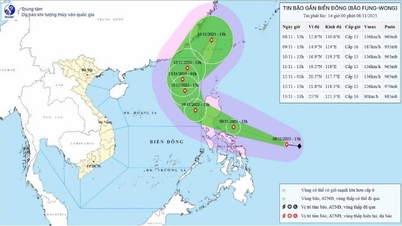
On November 8, the Ho Chi Minh City Department of Health said it had received reports from four hospitals in the area about more than 80 cases of hospitalization, suspected of food poisoning after eating bread.
Of these, Military Hospital 175 received 47 cases, Tam Anh General Hospital received 16 cases, Gia Dinh People's Hospital received 19 cases, Binh Dan Hospital received 1 case. Up to now, 47 patients have been discharged.
At Gia Dinh People's Hospital alone, a patient was recorded with severe abdominal pain, vomiting and diarrhea many times. Blood culture results were positive for Salmonella bacteria.
"Initially, clinical and paraclinical data of most patients are consistent with intestinal bacterial agents, most likely Salmonella," the Ho Chi Minh City Department of Health said.
The Ho Chi Minh City Department of Health has directed hospitals to ensure admission, classification and treatment of patients according to the treatment regimen for food poisoning.

The hospitals also cooperated in providing information to the HCM City Department of Food Safety for tracing and verification. The HCM City Department of Food Safety has temporarily suspended the operation of the relevant facility for investigation and collection of food and environmental samples.
Previously, SGGP Newspaper reported that in just one day, Military Hospital 175 (HCMC) received 40 emergency cases related to sidewalk bread sold on Nguyen Thai Son Street.
Emergency patients were scattered with symptoms of fever, abdominal pain, vomiting, diarrhea, and signs of mild to moderate dehydration. Two cases required inpatient treatment.
In 2024, in the bread poisoning incident in Vung Tau that left 379 people hospitalized, test samples taken from the "Co Ba Ben Dinh" bread and sticky rice shop (including boiled pork, pork pate, ham, sauce, and raw vegetables) were all found to be contaminated with salmonella bacteria.
Salmonella is the culprit behind many large-scale food poisoning cases. The bacteria enters the human body through food and drinks, grows rapidly in hot and humid environments (35-37 degrees Celsius), spreads into the environment and adheres to foods such as poultry meat and eggs.
Source: https://www.sggp.org.vn/xac-dinh-nguyen-nhan-khien-hon-80-nguoi-nhap-vien-sau-khi-an-banh-mi-post822400.html





































![[Photo] "Ship graveyard" on Xuan Dai Bay](https://vphoto.vietnam.vn/thumb/1200x675/vietnam/resource/IMAGE/2025/11/08/1762577162805_ndo_br_tb5-jpg.webp)


![[Video] Hue Monuments reopen to welcome visitors](https://vphoto.vietnam.vn/thumb/402x226/vietnam/resource/IMAGE/2025/11/05/1762301089171_dung01-05-43-09still013-jpg.webp)




































































Comment (0)